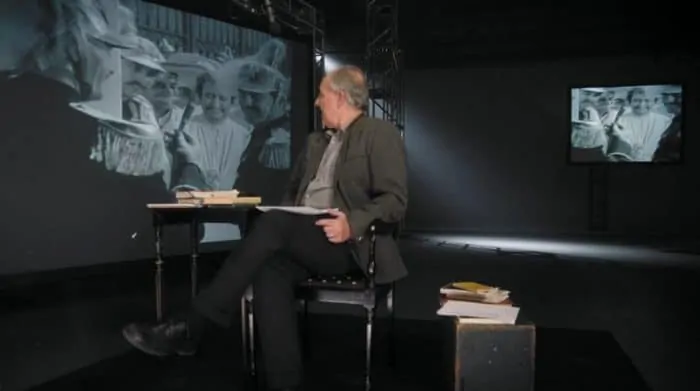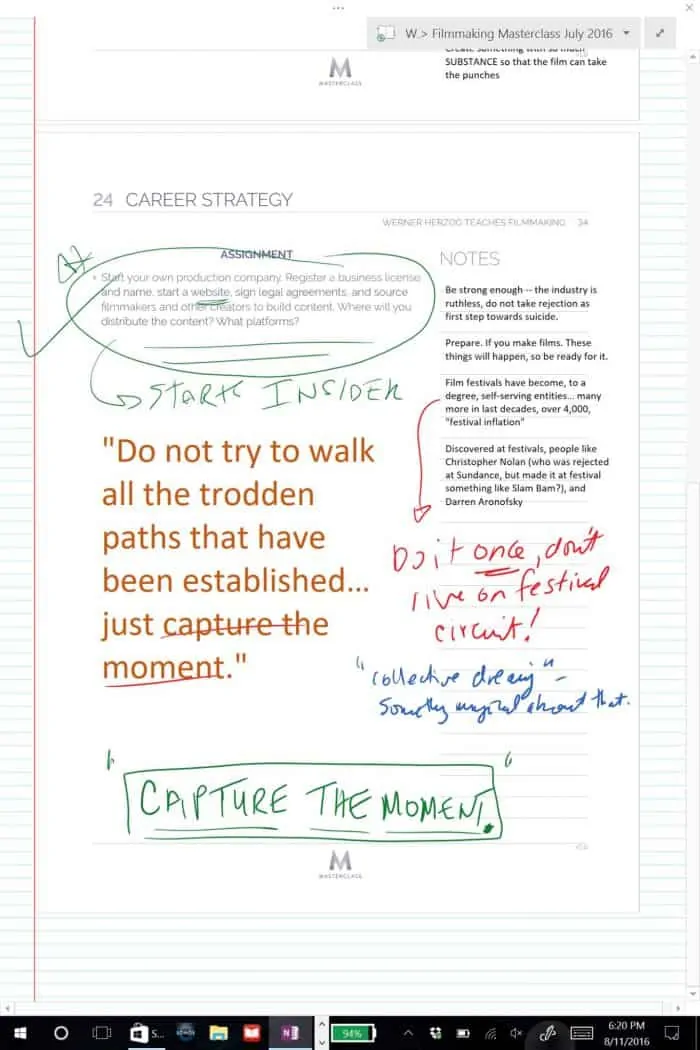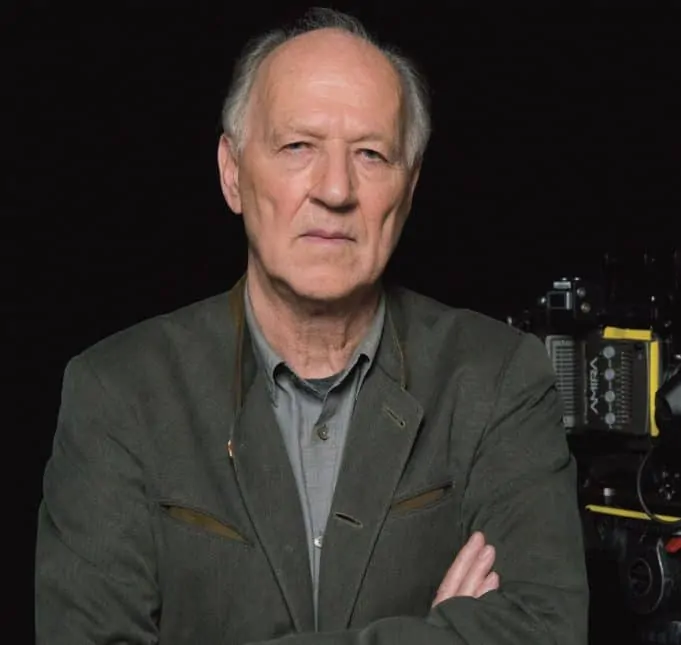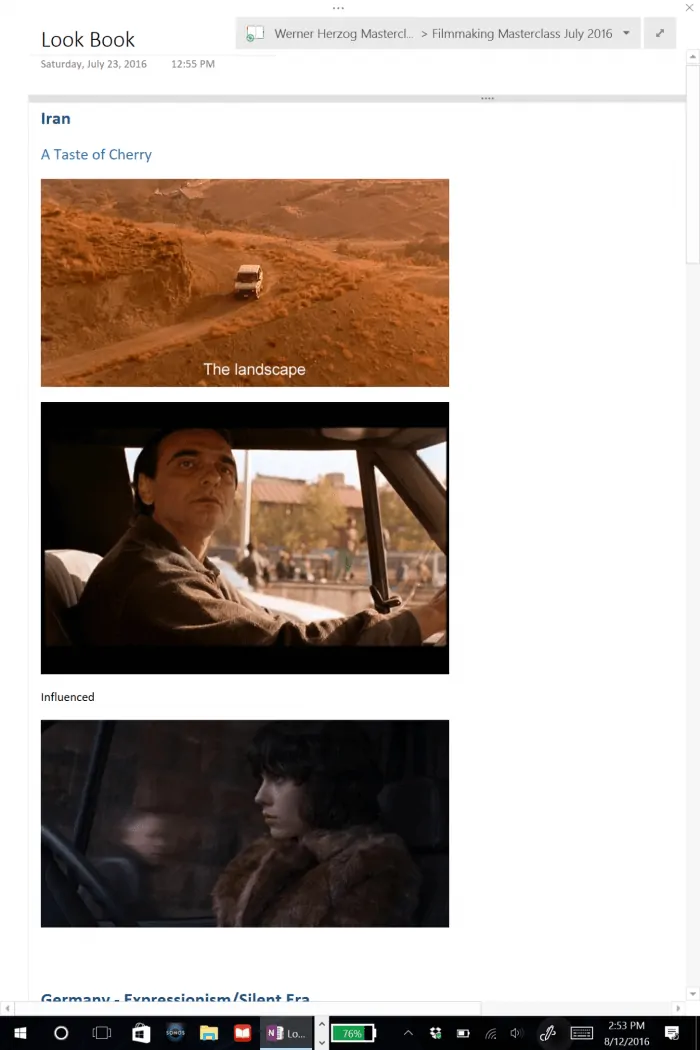“Capture the moment.”
One of this online film school’s final suggestions is simple enough. But when it’s delivered by none other than legendary director and documentarian extraordinaire Werner Herzog the advice may well have been hand-delivered from the heavens. Maybe it’s the charismatic German accent? The passion in the eyes, the face? Or that standing behind these (infinite) quotable quotes is a man who is still going strong in his sixth decade — as in sixty years — of filmmaking. This is the unstoppable force who brought us unforgettable visuals in some of the century’s most enduring, iconic films. Aguirre, the Wrath of God (1972). Nosferatu the Vampyre (1979). Fitzcarraldo (1982). And a stream of cerebral, often haunting, documentaries: Lessons of Darkness (1992); Grizzly Man (2005); and Into the Abyss (2011).
And, now, Werner Herzog wants to teach you everything he knows.

Werner Herzog Teaches Filmmaking
Become your subject
When I signed up with MasterClass I wasn’t expecting much. After all, this was an online class and it seemed largely a gimmick really, albeit a fancy one. It costs only $90 (USD). And, the company’s most visible pitchman up to this point has been an ever jubilant Kevin Spacey, who has been offering a class of his own on acting. Ah, the wonders of perpetuities…
But what I discovered over the past few weeks is that while there may be no such thing as a free lunch, there are still some mighty darn good deals to be found out there on the internet.
Enter Werner Herzog.
Though he suggests that you can learn the basics of filmmaking on your own in only one, or maybe two weeks tops (ironic given the suggested pace of the course is seven weeks), he feels that an important core of learning the craft is to read, read, read. And to write. A lot.
“Get into a fury of language,” he says. Icelandic poetry, Beethoven and Wagner, and impossibly tight deadlines are just a few of the tools he employs to “psych” himself up in advance of marathon writing sessions. It must work. He notes he’s written most of his feature films — such as Bad Lieutenant: Port of Call New Orleans (2009) — in only five or so intense days.
Watch Films to Learn Filmmaking
The course consists of 26 lessons. Each is accompanied by a video featuring a well-dressed Werner Herzog, sitting on a chair in a large room with a projection screen to his right. The videos range from under five minutes to almost twenty minutes in length. An assignment usually follows, and students can comment on the respective web pages. In addition, “office hours” enables us to submit video questions directly to the master, to which he can respond (though it looks as if only three in total exist at this point). To foster a community feeling, a Facebook group has been created and has about 2,000 members as of this writing.

I started slowly. Chapter 2 is all about watching film, learning about its history, and understanding various waves and movements.
So I found myself exploring Neorealism of Italy, Cinema Novo of Brazil, and the New Wave of France, among many other important cultural and stylistic inflection points of twentieth century cinema. I was fascinated how filmmakers used their work to circumvent strict censorship in Iran — by sneakily using children, for instance, to deliver political or ideology-driven messages. I delved into iconoclasm and explored “the aesthetic of hunger.”
It wasn’t long into my journey before I realized how early cinema had influenced many of my favorite directors.
Clearly the noir-ish and geometric aesthetic of films like The Cabinet of Dr. Caligari (1920) and Nosferatu (1922) have left their mark on people like Tim Burton (Edward Scissorhands), Ridley Scott (Blade Runner), and Alfred Hitchcock (Psycho), among so many other successful directors.
To watch Homayoun Ershadi drive across the dusty Tehran landscape in the wonderful A Taste of Cherry (1997) is to surely see the precursor — at least in mood — to that of cyborg Scarlett Johansson in Under the Skin (2013).
And it seems, although not cut from the same cloth to be sure, a film like Glauber Rocha’s roaming Black God, White Devil (1964) likely had an effect on surrealists like Alejandro Jodorowsky (El Topo), who would in turn influence modern day auteurs like Nicholas Winding Refn (Drive, The Neon Demon), each progressively evolving themes and styles, like a decades old community plasticine ball, to reflect their own perspectives.
Read, Read, Read
Later we were thrown a non-sequitur it would seem. Read “The Peregrine”, one early assignment asks. I did just that, wondering why at the time I needed to experience the first hand account of a bird watcher in 1960s England. After some tricky reading sessions (J.A. Baker’s prose is rich, poetic, and at times dense) I realized we were learning the mechanics of story-telling. Things like empathy, detail (for which Herzog is a stickler), and precision. And most definitely beauty in words, and the way observations can be translated into magnificent language. Wonderful stuff.
But these are just my guesses, and my reactions.
Don’t try hard to create an aesthetic and style. Let it seep in.
During the MasterClass, you’re left to your own devices. You watch a video, get an assignment, do the homework, and then come back for more. Werner doesn’t address or discuss previous lessons. Rather, you do it on your own and/or with your online classmates.
The first half of the curriculum is mostly concerned with narrative and the process of making feature fiilms: writing, financing, locations, cinematography (by the way, “it’s not the gear, it’s you”), working with actors, sound, editing.

No doubt the most compelling part of the course is Werner Herzog himself. He’s a gifted story-teller. And there are many, many stories. In any given lesson, he’ll recount humorous anecdotes. Actor Klauss Kinski, a notoriously difficult countryman, and frequent collaborator in his early films, is a frequent subject. In one entertaining scene, Werner shows a clip of himself years earlier listening to a recording secretly taped by a sound engineer of an on-set feud with Kinski. It’s delightful. And, of course, Herzog channeled Kinski’s outrageous moments of over-the-top anger into magnificent scenes (most notably perhaps in Fitzcarraldo). Quick! Slate! Action! Years later, he says, he can laugh at it, but at the time it was “serious stuff.” More recent stories and examples often lead to stories of Nicholas Cage. Interestingly enough, Herzog even had Cage do the “Kinski Spiral” in a film, to masterful effect.
Werner Herzog’s Wheelhouse: The Documentary
The latter part of the course delves into his real bread and butter: the documentary. Over the course of four chapters, WH’s passion for the genre is unmistakable. He explains how he “cracks people open” and reveals techniques for, in essence, getting strangers to lay down their souls on film.
Another fascinating subject is truth vs. fiction, especially with respect to the documentary film.
Herzog is notorious (apparently, this is something I learned during the course) for staging certain scenes in his documentaries. But, he implores, we are not journalists. We are filmmakers. Facts are just that: facts. They don’t “illuminate” us. Take the phone book, for example. It’s just names and numbers. Facts. Again, nothing to illuminate us, or open our hearts or minds.
One of the most fascinating sequences of this MasterClass comes when he explains when it makes sense to stage something by showing a clip from Happy People: A Year in the Taiga (2010). There a Russian woman in a burka stands before a frozen lake on a predictably grey, ominous day. Two men in the background lie flat on the ice behind her, crawling around, staring into the ice. Why? What are they doing? Herzog reveals all of that, and also explains why the scene wasn’t exactly how it appeared — and, most importantly, why it needed to be filmed like that and his rationale for doing so (and its reaction, even in Russia where those who say the film knew it was staged). It was definitely food for thought.
It’s Not the Gear, It’s You
There are filmmaking exercises, of course. I like that the emphasis in them is placed on story-telling (no surprise there). We’re not delving into 4K here (he’s not necessarily a fan). In fact, it was his continual emphasis on reading, writing, and finding the heart of a story that put me over the edge, and convinced me to sell my adored RED Raven digital cinema camera. After all, I had done plenty fine shooting videos here on Stark Insider with a DSLR, and often with a cell phone too. If anything playing around with menus, R3D files, and test videos was a distraction from the creative process. Done and done. Future improvements in my skill level would not come from a camera. Rather, I’m guessing they would need to be targeted at just everything else–pacing, editing, story-telling, lighting, sound. i.e. filmmaking.
Shoot only what you need. We are not garbage collectors, we are filmmakers!
You can upload your short films to the MasterClass web site. Others can critique your work. And you can critique theirs — using three simple parameters and a sliding bar. If there’s a potential weakness this is one of them. The skill level is all over the map. You’ll watch a shoddy video by a first-timer who surely had their heart in the right place, but made something akin to an insufferable home movie. On the other hand, click next, and you’re engaged in amazing work by someone who has years of filmmaking experience under their belt (even some with full blown feature films). While I did find it interesting to watch some of my online classmates’ submissions, it was ultimately of limited value.
Filmmaking: A Series of Humiliations
Throughout the course not once did I feel like Werner Herzog was dialing it in. On the contrary.
“Let’s turn loose the hog!”
As the lessons progressed, his passion seemed to intensify. Don’t do too many takes. It gets boring! (but study the work of other directors, like Kubrick, because all have their ways). I don’t like the Actor’s Studio! Don’t go into film because “it’s cool”! Its not, it’s banal and a series of humiliations!
And, one of my favorites, in response to his staging of scenes in some of his documentaries: “You are all losers! Happy New Year!”

While I do plenty of online learning — YouTube videos, Vimeo film essays, various lectures, etc. — there were several things I really appreciated about this course.
Firstly, since the class is taught by one person, Werner Herzog himself, you benefit from his unifying philosophy throughout.
Next, the course kicks your butt. As I previously noted, you need to read and write a lot. It’s clear Herzog has an affinity for quality. Whether it be poetry, literature, art, or film (which he says he does not often watch — though we know he’s watched and even critiqued Kayne West’s Famous music video). So we shouldn’t just sit around, and play with cameras. And we shouldn’t just talk about making films. We should just get to work. And, “be your own film school.”
Finally, and perhaps most importantly, this course inspires. On many levels. It’s taught by a craftsman with some 70-odd films under his belt. Not only that. Werner is now in his 70’s; you’d never know it. He’s going as strong as ever. How can you not be inspired from someone like that?
You learn about film-making, he says, through a series of defeats. Trial and error. Be ready for rejection. It’s not a first step towards suicide. Rather, embrace it, learn from it and move from it. Amen.
List of Films Used in Werner Herzog’s Online Filmmaking Class
Here’s a list of films Werner Herzog uses for his online filmmaking class. In addition, a student was generous enough to put together the list over on Letterboxd.
Aguirre, the Wrath of God (1972)
Bad Lieutenant: Port of Call New Orleans (2009)
Bells From the Deep (1993)
Burden of Dreams
Cave of Forgotten Dreams (2010)
Cobra Verde (1987)
Echoes From a Sombre Empire (1990)
Encounters at the End of the World (2007)
Even Dwarfs Started Small (1970)
Fitzcarraldo (1982)
Grizzly Man (2005)
Heart of Glass (1976)
Into the Abyss (2011)
La Maîtres Fous (1955)
Land of Silence and Darkness (1971)
Le Deuxième Souffle (1966)
Lessons of Darkness (1992)
Little Dieter Needs to Fly (1997)
Nosferatu the Vampyre (1979)
Pilgrimage (2001)
Signs of Life (1968)
Stroszek (1977)
The Enigma of Kaspar Hauser (1974)
The White Diamond (2004)
The Wild Blue Yonder (2005)
Viva Zapata! (1952)
Think Beyond What You’re Doing Right Now
This is easily the best $90 I have ever spent. I took the course on a lark. I joked with my wife about Werner Herzog’s strict manner and emphasis on precision. So German! And Loni soon invented her own alter ego, Loner Starzog, who would text me throughout the day with the occasional nugget of wisdom, or random thought. “This is a Kindle-free zone!” “Stare down the creative process! Show it who’s the boss!” “Cameras are just tools; your play things don’t amuse me!” (hence: RED Raven sold…)
Keep your curiosity completely awake all the time.
After spending a few weeks “studying” under Werner, a man admittedly obsessed with the distribution of prime numbers, I realized: here’s an astoundingly empathetic person, with a wonderful wit, and bucket-loads of charisma. No wonder he can get the finest out of not just actors, but the entire crew, and everyone else within ear shot of his sets.
Capture the Moment
I’ve finished the class. No doubt, I need to do better with my short films and videos. I hear WH’s voice: just do it! I’m thinking differently now. I’m hoping this will translate some how, some way into my video work for Stark Insider. I know I’ve missed the mark a lot. I cringe when I watch my stuff, even recent work. Such is the journey. No use lamenting. Time to get to work… !
I’d never suggest this online class might replace proper film school. And it’s certainly best suited for those just starting out. However, the course plays out in part as a homage, by and for Werner Herzog, the writer, the director, the story-teller himself. As he recounts his films, experiences and career, he gives us the best seat in the house. We are learning from not only a legend, but also a remarkable human being and truly gifted teacher.
Now it’s up to us, to find our own ships to move over mountains.
(and our own Klaus Kinskis to fuel our near-willingness to commit murder and… to inspire creative energy)







